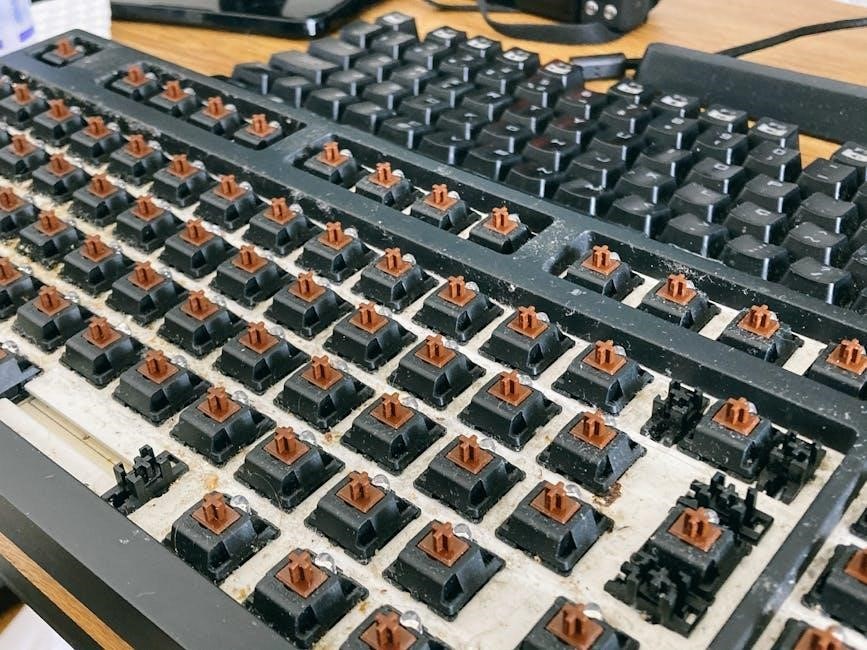This guide provides vital information regarding Dodge transmission compatibility. It explores interchangeability across different models‚ years‚ and engine sizes. Discover resources like online forums and charts to identify suitable transmissions for your Dodge vehicle.
Understanding Transmission Interchangeability
Understanding transmission interchangeability is crucial when considering a transmission swap for your Dodge vehicle. It involves assessing whether a transmission from one vehicle can be successfully installed and function correctly in another. Factors such as engine compatibility‚ drivetrain configuration (2WD vs. 4WD)‚ and electronic controls play significant roles. Interchange charts and online forums offer valuable insights‚ but careful research is essential. Confirming physical dimensions and mounting points is also important for successful swapping. Ignoring these factors can lead to performance issues‚ damage‚ or complete incompatibility. By understanding these considerations‚ you can make informed decisions and avoid costly mistakes during a transmission swap.
Factors Affecting Transmission Interchange
Several factors impact transmission interchange‚ including engine compatibility‚ drivetrain configuration (2WD vs. 4WD)‚ electronic controls‚ and physical dimensions. Careful consideration of these aspects is crucial for a successful transmission swap in Dodge vehicles.
Engine Compatibility
Engine compatibility is paramount when considering a transmission swap. The transmission must be designed to handle the engine’s power output and torque. Dodge transmissions were often paired with specific engine families‚ so understanding these original pairings is crucial. For instance‚ a transmission designed for a smaller engine may not withstand the demands of a larger‚ more powerful engine.
Check interchange charts that indicate compatibility with varying engine sizes‚ such as those ranging from 1.2L to 2.3L; Ensure the transmission’s bellhousing pattern matches the engine block‚ and that the torque converter is compatible with the engine’s flexplate.
Drivetrain Configuration (2WD vs. 4WD)
Drivetrain configuration‚ whether 2WD or 4WD‚ significantly impacts transmission interchangeability. Transmissions designed for 2WD vehicles are typically not compatible with 4WD vehicles‚ and vice versa‚ without substantial modifications. 4WD transmissions have an additional output shaft for the transfer case‚ which is absent in 2WD transmissions.
The transmission’s tail housing and output shaft splines must match the transfer case input shaft for proper engagement in 4WD applications. Attempting to use a 2WD transmission in a 4WD vehicle‚ or vice versa‚ can lead to driveline damage and potential safety hazards. Always verify the drivetrain configuration before swapping.
Key Considerations Before Swapping
Before swapping‚ consider electronic controls‚ sensors‚ physical dimensions‚ and mounting. Ensure compatibility to avoid issues. Research thoroughly using resources like online forums and interchange charts for informed decisions.
Electronic Controls and Sensors
Modern Dodge transmissions rely heavily on electronic controls and sensors for optimal performance. Compatibility of these systems is crucial when considering a swap. Ensure that the replacement transmission’s electronic components are compatible with your vehicle’s ECU. Mismatched sensors can lead to incorrect readings‚ affecting shift quality and overall performance.
Solenoids‚ which control fluid flow within the transmission‚ must also be compatible. Check wiring harnesses and connectors for proper fit and function. Ignoring these electronic aspects can result in transmission malfunctions and diagnostic trouble codes. Thorough research is essential to guarantee a successful swap. Verify sensor types and control module compatibility before proceeding.
Physical Dimensions and Mounting
Before attempting a transmission swap‚ carefully assess the physical dimensions and mounting points of both the original and replacement units. Discrepancies in size can create significant challenges‚ requiring modifications to the transmission tunnel or crossmember. Ensure adequate clearance for the transmission housing‚ bellhousing‚ and any associated components.
Mounting points must align correctly with the vehicle’s frame. If modifications are necessary‚ they should be performed by a qualified professional to maintain structural integrity. Consider the driveshaft length‚ as a different transmission may require a custom-length driveshaft. Proper measurements and planning are crucial for a successful and safe installation. Ignoring these physical aspects can lead to costly rework.
Common Dodge Transmission Swaps
Several Dodge transmission swaps are popular among enthusiasts. These swaps often involve upgrading to a more robust or readily available transmission. Compatibility depends on various factors‚ including engine type and vehicle model.
4L60E Compatibility
The 4L60E transmission is a popular choice for swaps due to its versatility and availability. While not originally a Dodge transmission‚ adapting it to certain Dodge vehicles is possible. Factors to consider include bellhousing adapters and electronic control compatibility. The 4L60E’s adaptability stems from its widespread use in GM vehicles‚ making parts readily available.
However‚ ensure proper torque converter matching (298mm or 300mm) for correct operation. Swapping solenoids and sensors may not be necessary within certain year ranges (e.g.‚ 1996-1999)‚ but always verify compatibility. Consulting transmission interchange charts and forums is crucial for a successful 4L60E swap.
Resources for Identifying Compatible Transmissions
Identifying compatible transmissions requires utilizing various resources. Online forums‚ communities‚ and transmission interchange charts offer valuable insights. These resources provide information on successful swaps‚ potential issues‚ and necessary modifications.
Online Forums and Communities
Online forums and communities are invaluable resources for identifying compatible Dodge transmissions. Enthusiasts and mechanics share their experiences‚ providing real-world insights into successful transmission swaps. These platforms offer a wealth of knowledge on specific models‚ engine pairings‚ and potential compatibility issues. Users can ask questions‚ share tips‚ and access a collective understanding of Dodge transmission interchangeability.
Dedicated Dodge forums often feature threads discussing transmission swaps‚ modifications‚ and troubleshooting. Members frequently share information on required parts‚ necessary adjustments‚ and potential pitfalls to avoid. Engaging with these communities can significantly enhance your understanding and ensure a smoother transmission swap process.
Transmission Interchange Charts
Transmission interchange charts are essential tools for determining compatibility across various Dodge models and years. These charts provide a structured overview of which transmissions can be successfully swapped‚ considering factors like engine type‚ drivetrain configuration‚ and electronic controls. They often include detailed information on transmission codes‚ dimensions‚ and gear ratios.
These charts can help identify potential donor vehicles and ensure that the replacement transmission is suitable for your specific application. However‚ it’s crucial to verify the accuracy of the chart and cross-reference information with other sources. Always consult with experienced mechanics or transmission specialists for expert advice.
Potential Issues and Solutions
Swapping transmissions can lead to issues like mismatched gear ratios or electronic control incompatibilities. Addressing these requires careful research‚ component adjustments‚ or even professional assistance to ensure optimal vehicle performance.
Mismatched Gear Ratios
One significant concern when swapping transmissions is the potential for mismatched gear ratios. This occurs when the replacement transmission’s internal gearing doesn’t align with the original transmission or the vehicle’s differential. The consequences of mismatched gear ratios include compromised acceleration‚ reduced fuel efficiency‚ and inaccurate speedometer readings.
Moreover‚ it can strain the engine and drivetrain components‚ potentially leading to premature wear or failure. Addressing this issue often involves researching and selecting a transmission with gear ratios closely matching the original. Alternatively‚ modifying the differential’s gear ratio can compensate‚ though this requires specialized knowledge and equipment to implement correctly and make sure that the car drives and performs in the correct way.


